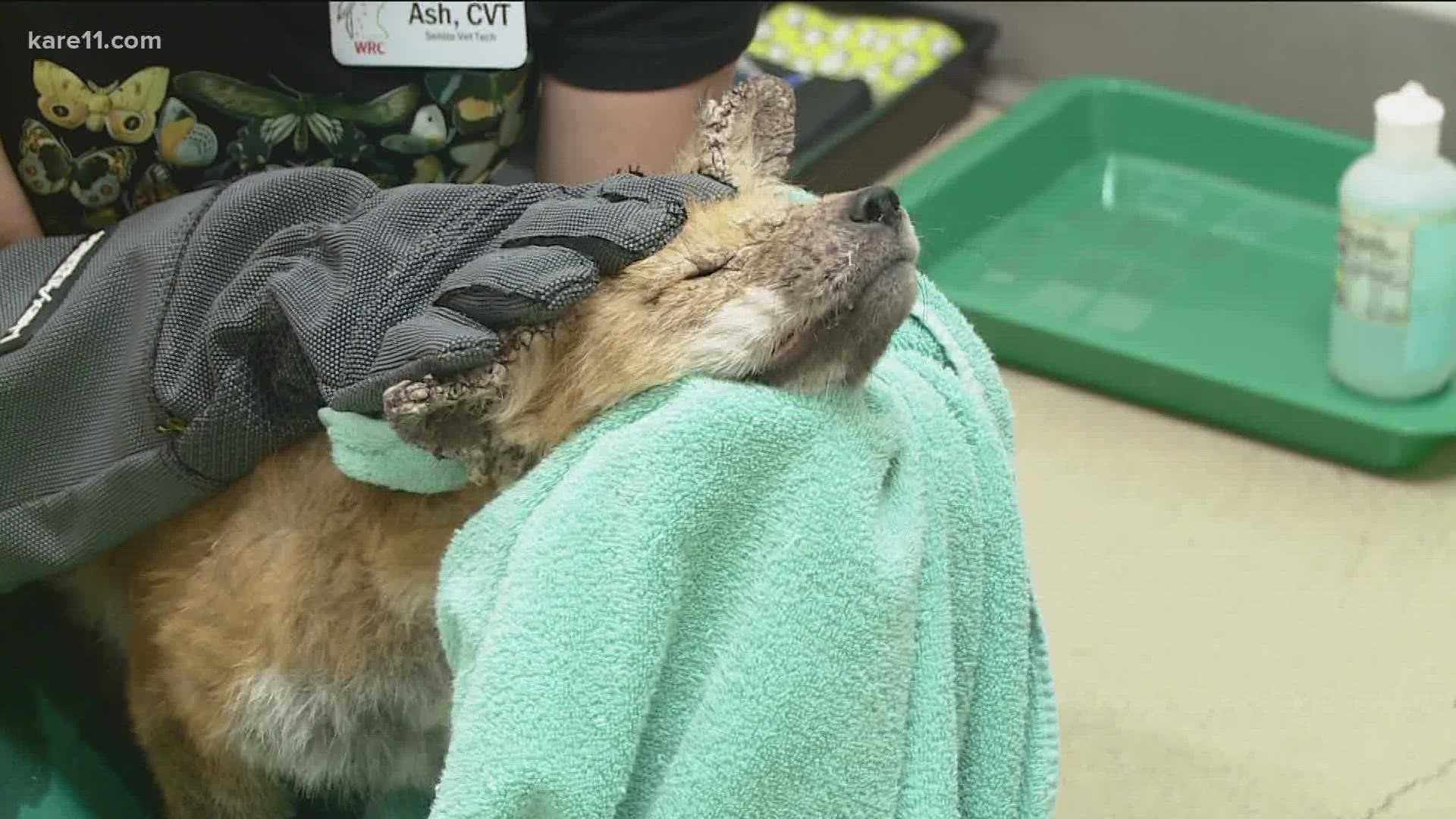ROSEVILLE, Minn. — This is a critical time of year for one of Minnesota's most common animals. Right now, the red fox is susceptible to a parasite that can eventually kill them.
Many of the sick foxes are juveniles and fail to hunt on their own, as well as having potentially compromised immune systems.
Roseville's Wildlife Rehabilitation Center is treating several foxes suffering from mange — the contagious skin disease caused by biting mites.
Dr. Amanda Rappaport said the condition causes the animal to spend more time scratching than hunting, losing so much fur it can't regulate its body temperature and eventually will starve to death.
"We have come up with ways to treat these foxes, so we'd like to treat more of them versus letting them suffer out there," said Rappaport.
The treatment is a mix of medications, fluid and blood work, but it starts with people taking time to trap a sick fox, like Rhonda Peterson, who first found one in her backyard weeks ago.
"You know, we had tons of filets in the freezer and we knew it would eat salmon," said Peterson. "We just thought we might as well try it; we don’t want to see it starve to death."
WRC says you can ask a neighbor for a trap or buy one at your local hardware store. Feeding a fox is easy because it's usually starving. The vets say not to feed the animal once it's trapped because in the case of an emaciated animal, too much food has the opposite effect. It's called refeeding syndrome and can do significant harm to the fox's internal organs.
WRC has created a case study that shows how the medical staff treat a fox with mange in the first 48 hours. Some of the images may be hard to look at.
"We were glad we were able to trap it when we did," said Peterson. "Cross our fingers it'll be ok and it'll be released."
After its first exam, the vets determined this particular fox was emaciated and will need lots of care.
"You can see the roller coaster the patient has to go through, and it’s really hard between the first 48 and 72 hours where it’s a critical time for the mange foxes when they get in here," said Rappaport.
It can take up to six months for a fox to get over mange and the vets hope this one will make a full recovery.
Peterson may have saved one fox's life, but the vets recognize trapping can make people uncomfortable. They say they're available to walk you through it by calling 651-486-9453.

